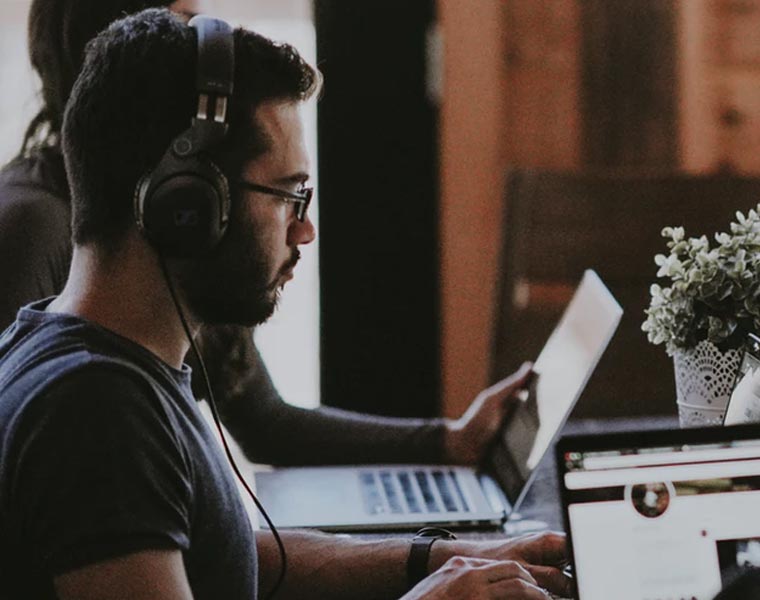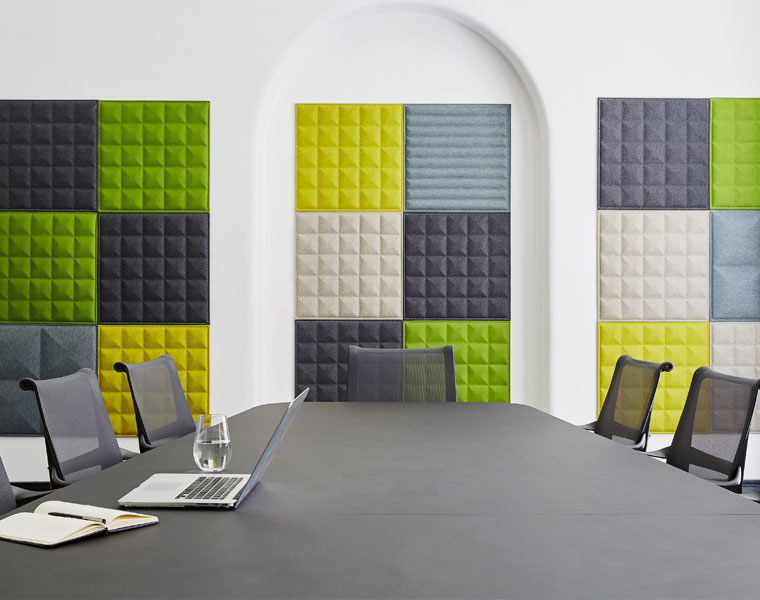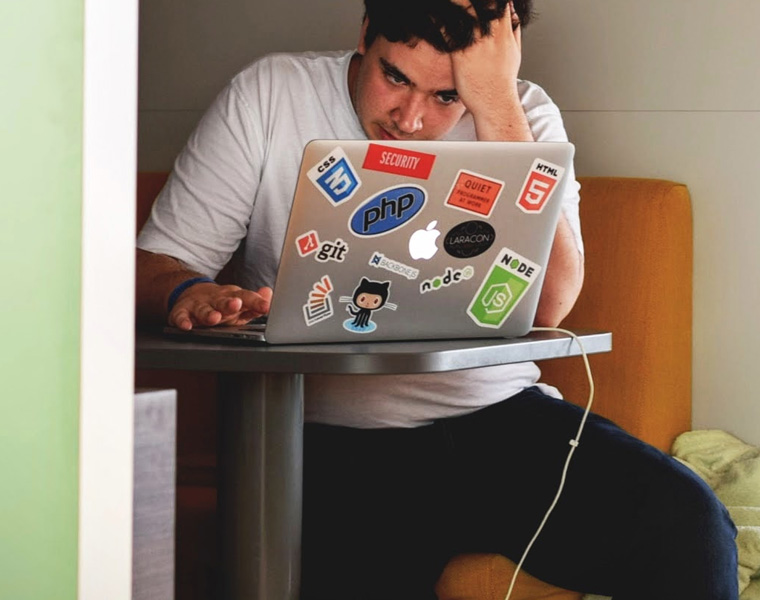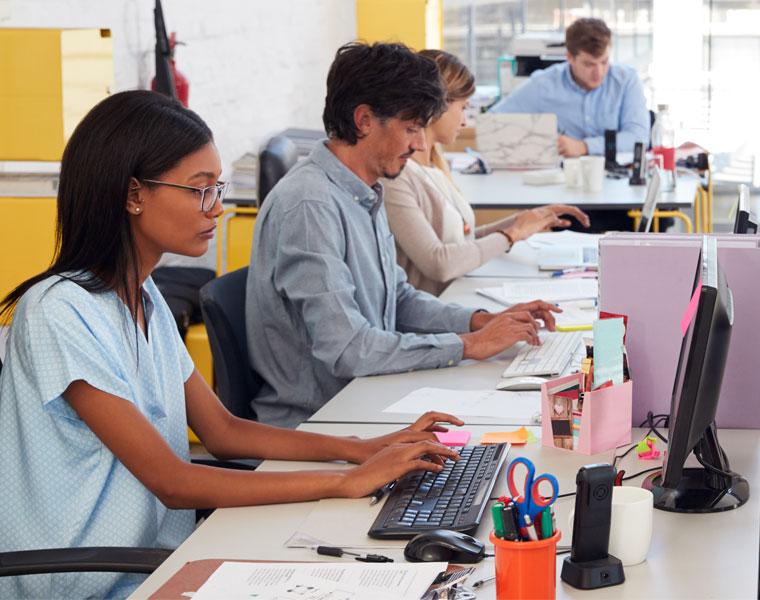On our Instagram page last month, we discussed the method or madness behind Panasonic’s new prototype ‘human blinkers’. In theory it makes sense but in practice, is it all just a little too bizarre? Jury is out on that one but it does demonstrate the lengths that we are having to go to in order to find focus and concentration.
Human blinkers may be a concept that is still in the distance but wearing headphones has become commonplace in the modern office. Headphones are often the only way to shut out background noise, limit distraction and signal to colleagues that you don’t want to be disturbed.

While headphones might be a quick fix to boost personal concentration, it’s not the most conducive means to communication, collaboration and teamwork. In this blog post, we want to share some of our advice on the workspace design choices you could be making to enhance concentration levels and productivity company-wide.
First though, let’s take a look at some recent research around the topic of concentration (or lack of) …
We now only spend around 3 minutes on a task before being interrupted
Gloria Mark, Associate Professor at The Donald Bren School of Information and Computer Sciences (University of California) published an interesting piece of research which shows how small our windows of concentration have become.

The study found that, on average, people are now only spending 3 minutes and 5 seconds on a task before being interrupted. Mark refers to these tasks as ‘working spheres’ and found that, on average, each person deals with 12 spheres a day, typically switching between them every 10 minutes and 29 seconds.
Worryingly, Mark’s research also revealed that people are interrupting themselves almost as much as they are being interrupted by external forces. In fact, 44% of the time we are interrupting ourselves, which is exemplified in how, on average, people switch between their devices every 2 minutes and 11 seconds.

The curse of ‘attention residue’
Computer Science Professor, Cal Newport talks about something called the ‘hyperactive hive mind’ and how the ‘frenetic’ nature of working behaviours today is resulting in something he calls ‘attention residue’. This is when the mind is lingering on previous tasks even when you have moved onto another, which is particularly problematic given Mark’s discovery around how often people are switching between tasks (or working spheres).
Newport talks about how this approach to work – as well as an attachment to technology – is increasing multitasking and consequently, hindering deep thought and the ability to concentrate. It’s all too easy to be working on a task, get distracted by a text message, check your emails, receive an electronic reminder and then all of a sudden, your trail of thought and focus on the original task is gone.

The busier we are and the more people try to transition between tasks, the worse the quality of concentration and the higher risk of mistakes and burnout or cognitive overload.
Improving concentration through workspace design
The human brain naturally struggles to focus on more than one task at a time. As if to demonstrate, a Gallup study revealed that it takes an average of 23 minutes and 15 seconds to regain focus after being interrupted.
Newport suggests that this could be improved if modern workspaces took inspiration from production lines when refining their systems and processes. However, this linear approach to work isn’t always suitable or applicable, especially in creative industries.

Our suggestion?
Make some strategic changes to your space configuration and furniture portfolio to introduce more support for concentration, focus and productivity. The layout of a space and the furniture and technology resources in it can significantly help reduce internal and external interruptions, as well as limiting the effects of the physical and mental lag caused by distraction.
Some examples:
- Meeting rooms with electronic booking systems to avoid interruptions during meetings
- Privacy booths or enclosed work settings where people can go to focus alone
- Office acoustic solutions to reduce noise distraction
- Supporting communication between resident and remote workers so that people can work from home or away from the office if they feel they need to
- Tech-free or analogue spaces where people can take a break from screens and devices
- Purpose-built collaboration settings where people can come together in teams or sprints to concentrate on one particular task as a group
Click for more reading on how to improve concentration in a noisy workplace.



